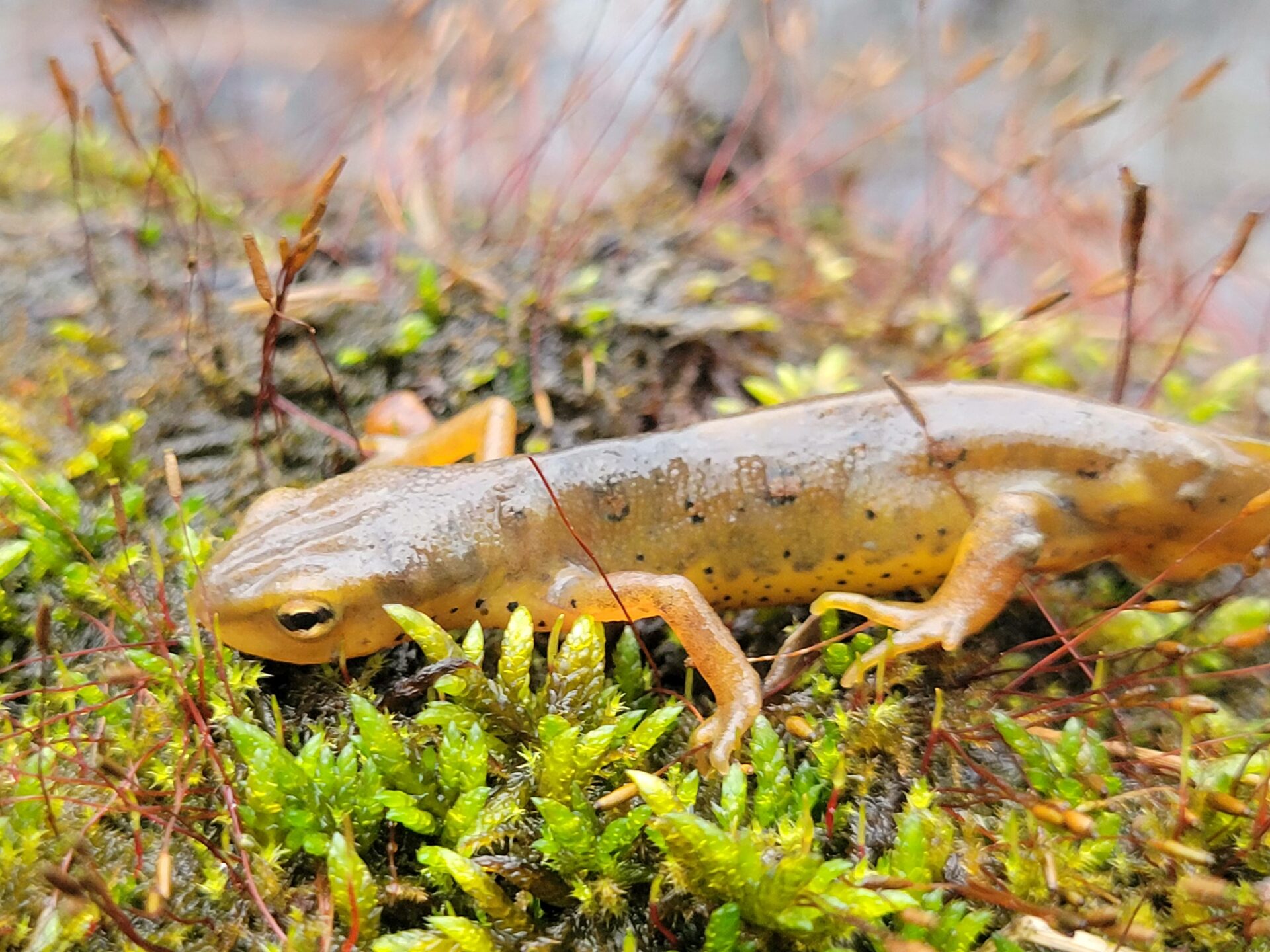
The eastern newt is commonly seen here at Bernheim in the warmer months of the year in wet, forested environments. The larva appears brownish and has gills since it begins life in a fully aquatic stage within the pools and wetlands where it hatches throughout the forest. In its juvenile stage, the eastern newt is known as a red eft. Its forelimbs are completely developed at this point, and it is fully terrestrial. The eft is bright reddish-orange, with vivid red spots outlined in stark black. After a few years of roaming the forest floor, it finds a nice pool to settle in as an aquatic adult. The adult eastern newt retains its red spots, but it appears greenish-brown and develops a long, paddle-like tail.
A neurotoxin secreted from the skin effectively deters many predators from grabbing a slimy meal, but the eastern newt can be prey to many birds, snakes, fish, and even insects, especially in the larval stage. The eastern newt preys on invertebrates.


The eastern newt has some remarkable capabilities as well. One ability it demonstrates is regeneration after injury. Not only is it able to regrow its forelimbs, but it can also regenerate some organs, including the heart. Another notable trait this newt possesses is the ability to navigate its home range using magnetic orientation. Ferromagnetic materials within its body allow the eastern newt to detect the earth’s magnetic field, and in turn, find its destinations.
While the eastern newt is quite common, due to its sensitivity to environmental changes such as decreasing water quality and temperature fluctuations it is considered a sensitive species. A sensitive species can be an indicator of habitat quality and overall ecosystem health. Bernheim’s Natural Areas team works to protect and enhance high-quality habitats and highlight the intrinsic value of species like the eastern newt.

